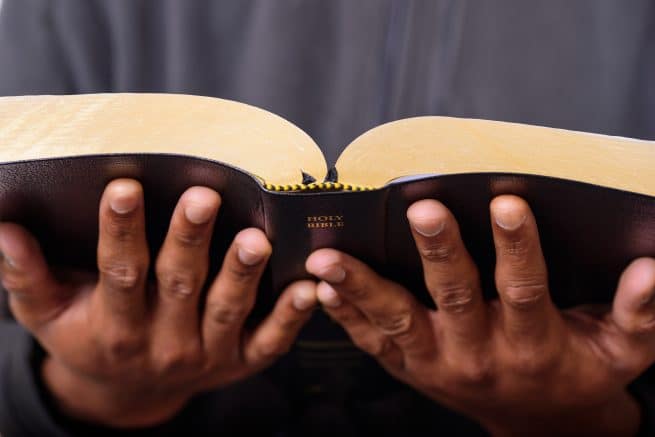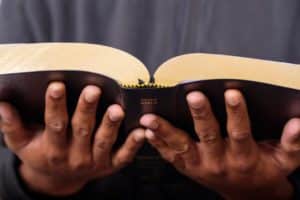Where Are the African-American Missionaries?


This article was originally published for Support Raising Solutions by Byron Johnson.
There are some unique barriers many African-Americans face as it relates to fundraising. Shortage of resources, limited network of relationships, pressure from family, not understanding the traditional fundraising practices and how those practices translate in their cultural context, scarcity of models or mentors, just to name a few.
How about not being enlightened by the history of African-Americans engaged in missions? Could this impact the ability for an African-American to raise sustainable funding? Absolutely!
If there are others who have gone before you who are similar to you or of the same ethnicity, having shared comparable experience, this can provide some external motivation to pursue success in the area of fundraising.
I remember, over 30 years ago, conversing with one of the few African-American missionaries I knew at the time. He told a story of some Christian friends of his, who were also African-American, who had recently returned from a mission trip to Central America. The natives in Central America made this comment to his friends:
“We see Michael Jordan, Magic Johnson, and other famous African-Americans, but where are the African-American missionaries?”
Wow! As a 20-year-old college student who had been a Christian for about 4 years, these comments resonated with me.
A few years later I answered the call to missions and have been engaged in missions now for 27 years. I knew this call to missions would require some fundraising and that desire to answer the call served as a motivation to fund raise.
Unsung Heroes
That question: “Where are the African-American missionaries?” also sent me on a journey to discover some of the history of African-American involvement in missions. I had to dig very deep to unearth some of this history, but it was well worth it. I feel as if I have only scratched the surface. I discovered many untold stories and unsung heroes of missions.
Most Christians are aware of William Carey, Adoniram Judson, Gladys Aylward, Hudson Taylor, George Müller, Amy Carmichael, Jim Elliot, Lottie Moon, and Helen Roseveare. But does the name George Liele (also spelled Lisle) ring a bell? Probably not!
Very few people know about George Liele, but he was the first American missionary. Let me repeat myself. He was the first American missionary! He departed for Jamaica in 1782, approximately 10 years before William Carey (who has been given the title “Father of modern-day missions”) departed for India. This was also 30 years before Adoniram Judson landed in Calcutta, eventually in route to Burma.
What about the name Betsey Stockton? During the nineteenth century, men dominated the missionary movement. Most women during this time who were engaged in missions were wives of missionaries. Betsey was the first single female missionary from North America. In 1822, she joined a team of 11 missionaries departing for the Sandwich Islands, modern-day Hawaii. She was the only black person on the team.
There are many other African-Americans who answered the call to foreign missions. Here is snapshot of a few to whet your appetite, and a list of more worth investigating:
Patrick Cuffe (1811) set sail to Sierra Leone, along with his all African-American crew. He was eager to start settling African-Americans there who could evangelize the Africans, establish business enterprises, and work to stop the slave trade at its source. He actively recruited future settlers among the free African-Americans of Baltimore, Philadelphia, New York, and Boston. In 1815 Cuffe embarked on another journey for Sierra Leone with 38 settlers.
Lott Carey (1821) landed initially in Sierra Leone. A year or so later he departed for Liberia. Carey says, “This step is not taken to promote my own fortune, nor am I influenced by any sudden impulse. I have counted the cost and have sacrificed all my worldly possessions to this undertaking. I am prepared to meet imprisonment or even death in carrying out the purpose of my heart. It may be that I shall behold you no more on this side of the grave, but I feel bound to labor for my brothers, perishing as they are in the far distant land of Africa. For their sake and for Christ’s sake I am happy in leaving all and venturing all.” Sixty years after Carey’s death, African-American Baptists in America established the Lott Carey Baptist Foreign Mission Convention, which operates in Liberia, Haiti, India, Jamaica and South Africa.
Hoise Birks (1962) joined Operation Mobilization (OM) in Europe. He became the first African-American to join OM. Between 1958-1960, Hoise took several mission trips to Mexico. These trips served as a launching pad for his call to missions. Hoise says, “My ministry since I came to know the Lord, has been strongly oriented toward foreign missions.” Dr. George Verwer, founder of OM, stated, “Hoise was a pioneer in missions ahead of his day, but not many would listen due to the complexity of our churches and society.” He pioneered works in Europe, the Middle East, and Asia. He was especially used of God in India, where he had a special relationship with Bakht Singh and his prolific indigenous church-planting movement.
Others:
Daniel Coker (1820), Colin Teague (1821), John Day (1830), Amanda Berry Smith (1878), James Pressley (1883), Mariah “Mama” Fearing (1894), John Chilembwe (1901), Althea Brown Edmiston (1901), Fanny Jackson Coppin (1905), Elgin and Dorothy Taylor (1959)
According to William Seraile, “By 1855 all U.S. Methodist missionaries to Africa were African-American; of the thirteen Presbyterian missionaries in Liberia in 1868, twelve were black; and all nineteen Southern Baptist missionaries in Liberia in the late 1850s were black.” Right before WWII, 3.75% of the 8,000 missionaries in Africa were African-American.
Following in Their Footsteps
I can only imagine the tenacity and courage it took as an African-American in the eighteenth and nineteenth centuries to overcome what were probably considered insurmountable obstacles. God was faithful to raise these men and women up to answer the call to missions. May He do the same today amongst African-Americans.
Where are the African-American missionaries? They are there to be discovered. Just a little research and you will unearth some “gems” in the missionary landscape. Let’s get to digging!
As we mine these “gold nuggets,” let’s allow their courage and commitments to serve as motivation for us to become or encourage one of those African-American missionaries who will go down in the annals of history by developing a team of solid ministry partners.
This article is submitted by Jessica Wood of Support Raising Solutions. Support Raising Solutions is a Missio Nexus member. Member organizations can provide content to the Missio Nexus website. See how by clicking here.



Responses